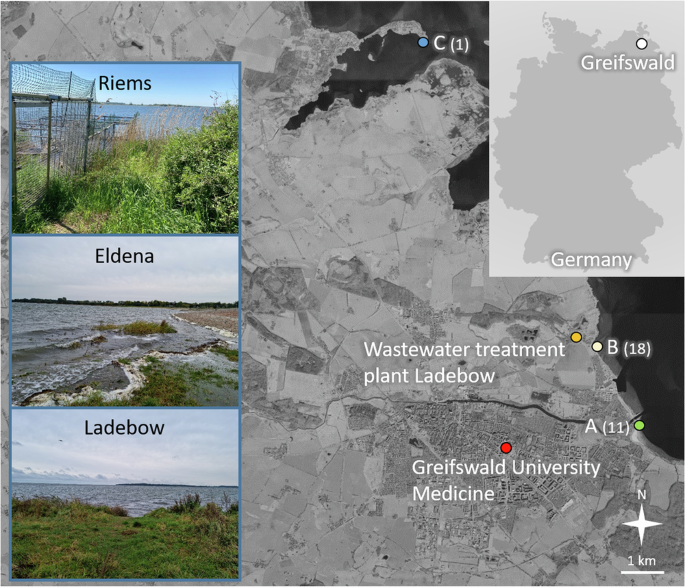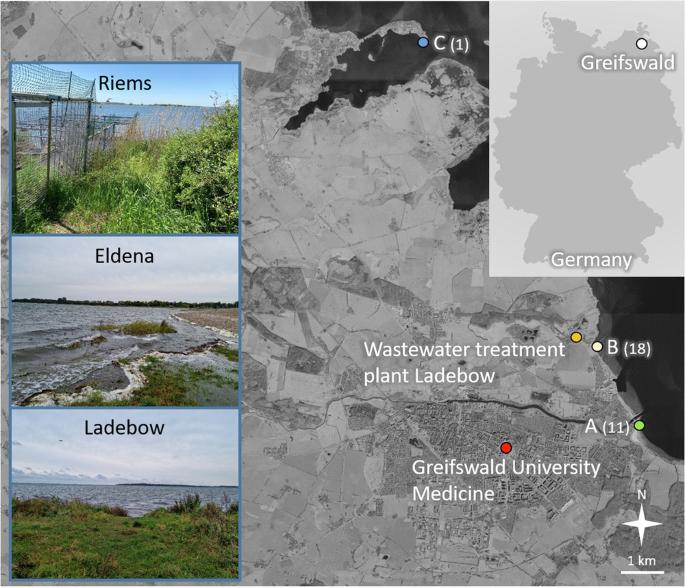Multidrug-resistant high-risk clonal Escherichia coli lineages occur along an antibiotic residue gradient in the Baltic Sea
IF 11.4
1区 工程技术
Q1 ENGINEERING, CHEMICAL
引用次数: 0
Abstract
The global spread of multidrug-resistant Escherichia coli threatens human, animal, and environmental health. Despite the recognition of water bodies as potential reservoirs, research on antimicrobial resistance (AMR) and antibiotic residues in the Baltic Sea is limited. In this study, we examined the presence of ESBL-producing E. coli in surface water in northeastern Germany. We then conducted phenotypic and genotypic analyses of the strains, which encompassed AMR and heavy metal/metalloid tolerance, biofilm formation, and detailed plasmid examination. In addition, we used solid-phase extraction with ultra-high performance liquid chromatography and mass spectrometry to quantify antibiotic residues. Our analysis identified 30 ESBL-producing E. coli isolates, some of which were associated with clinically relevant high-risk clonal lineages. We detected antibiotic residues in the environmental samples, but the antibiotic concentrations were significantly lower compared to wastewater samples. These results suggest that the Baltic Sea surface water could serve as a reservoir for ESBL-producing E. coli and clinically relevant antibiotics.


波罗的海沿抗生素残留梯度出现耐多种药物的高风险克隆大肠埃希菌系
耐多药大肠杆菌在全球的蔓延威胁着人类、动物和环境的健康。尽管人们认识到水体是潜在的蓄水池,但对波罗的海的抗菌药耐药性(AMR)和抗生素残留的研究却很有限。在这项研究中,我们检测了德国东北部地表水中产 ESBL 大肠杆菌的存在情况。然后,我们对菌株进行了表型和基因型分析,包括 AMR 和重金属/类金属耐受性、生物膜形成以及详细的质粒检查。此外,我们还利用固相萃取与超高效液相色谱法和质谱法对抗生素残留进行了定量分析。我们的分析确定了 30 株产 ESBL 的大肠杆菌分离物,其中一些与临床相关的高风险克隆菌系有关。我们在环境样本中检测到了抗生素残留,但与废水样本相比,抗生素浓度明显较低。这些结果表明,波罗的海地表水可能是产生 ESBL 的大肠杆菌和临床相关抗生素的储存库。
本文章由计算机程序翻译,如有差异,请以英文原文为准。
求助全文
约1分钟内获得全文
求助全文
来源期刊

npj Clean Water
Environmental Science-Water Science and Technology
CiteScore
15.30
自引率
2.60%
发文量
61
审稿时长
5 weeks
期刊介绍:
npj Clean Water publishes high-quality papers that report cutting-edge science, technology, applications, policies, and societal issues contributing to a more sustainable supply of clean water. The journal's publications may also support and accelerate the achievement of Sustainable Development Goal 6, which focuses on clean water and sanitation.
 求助内容:
求助内容: 应助结果提醒方式:
应助结果提醒方式:


